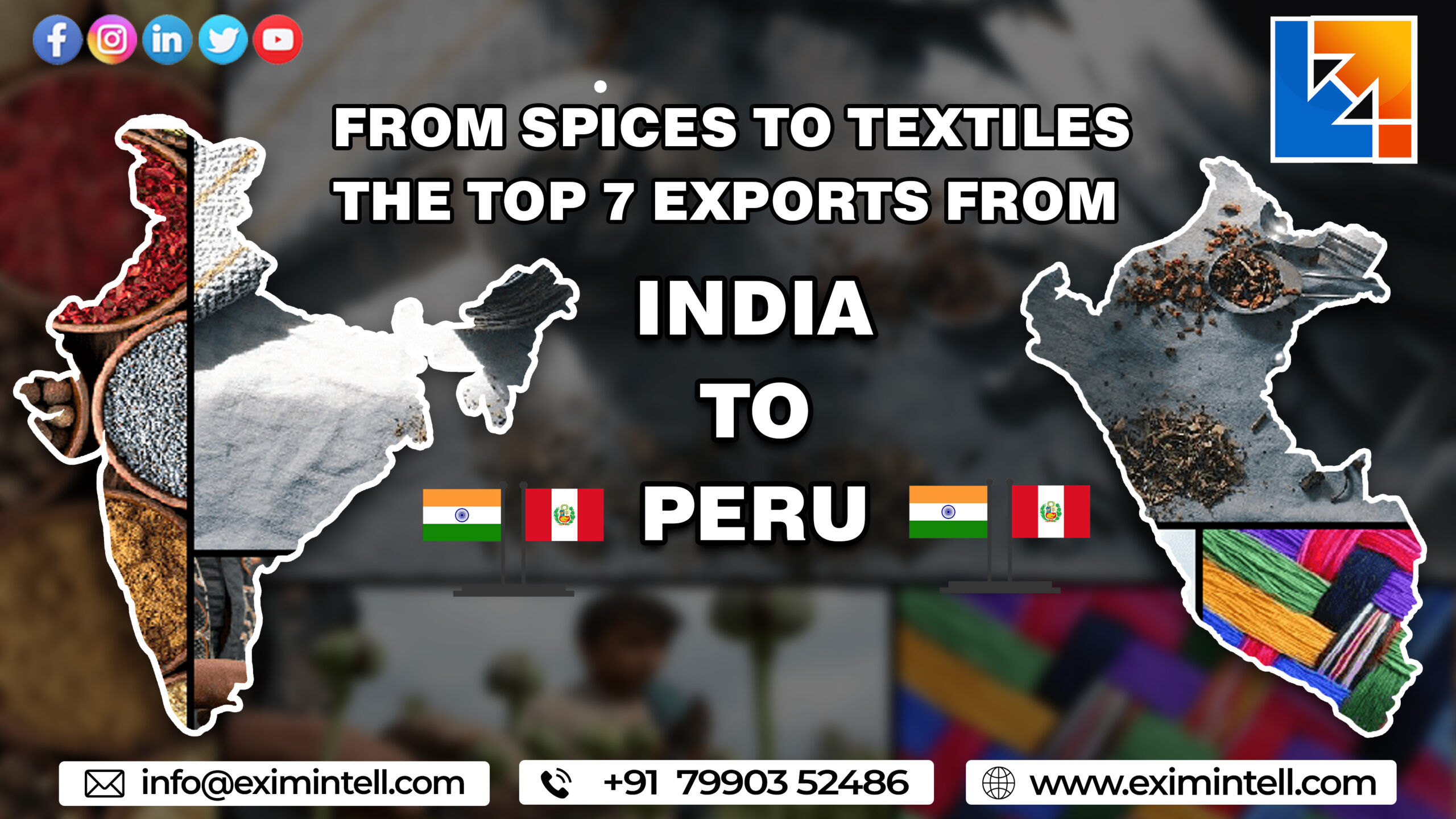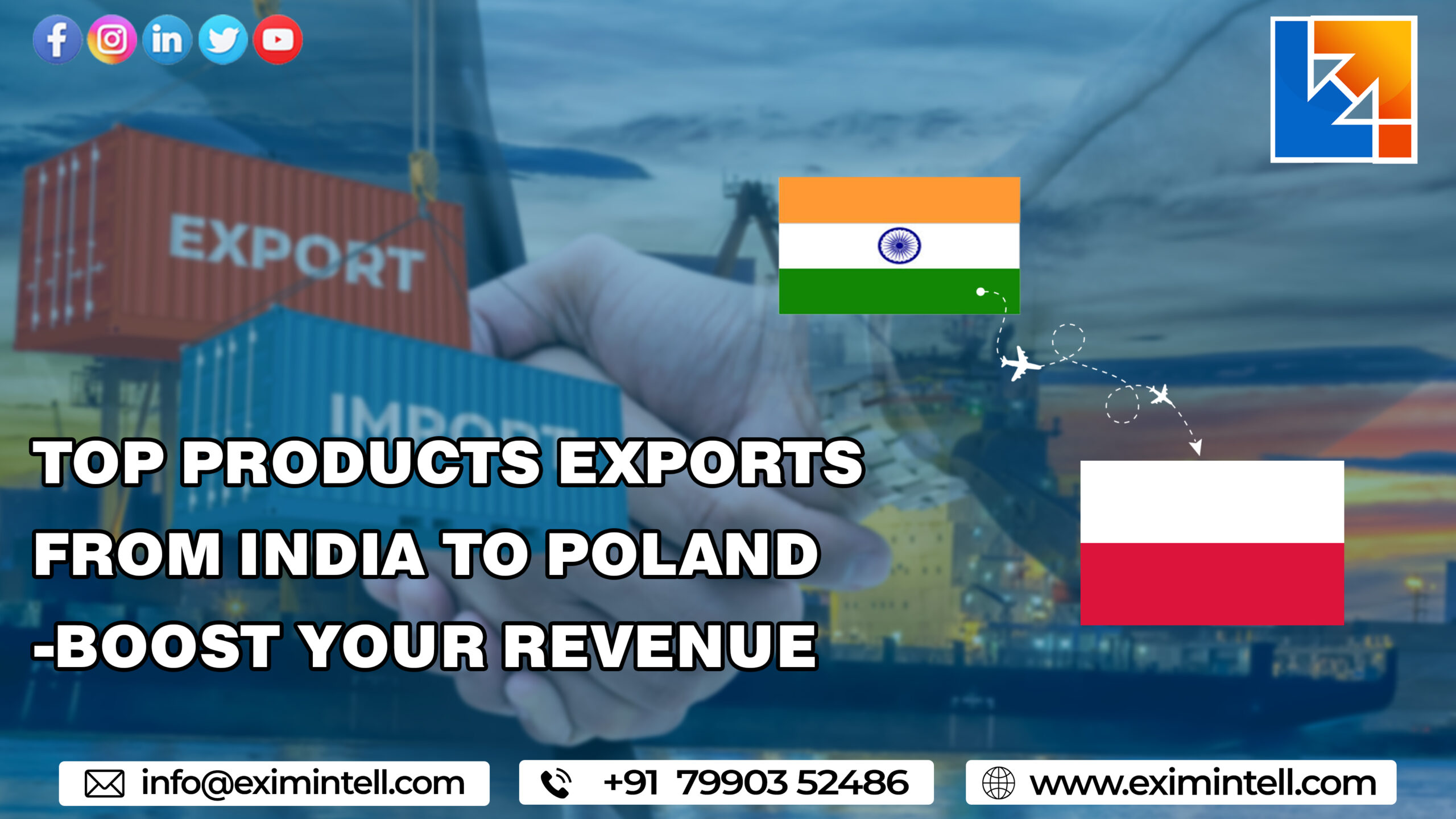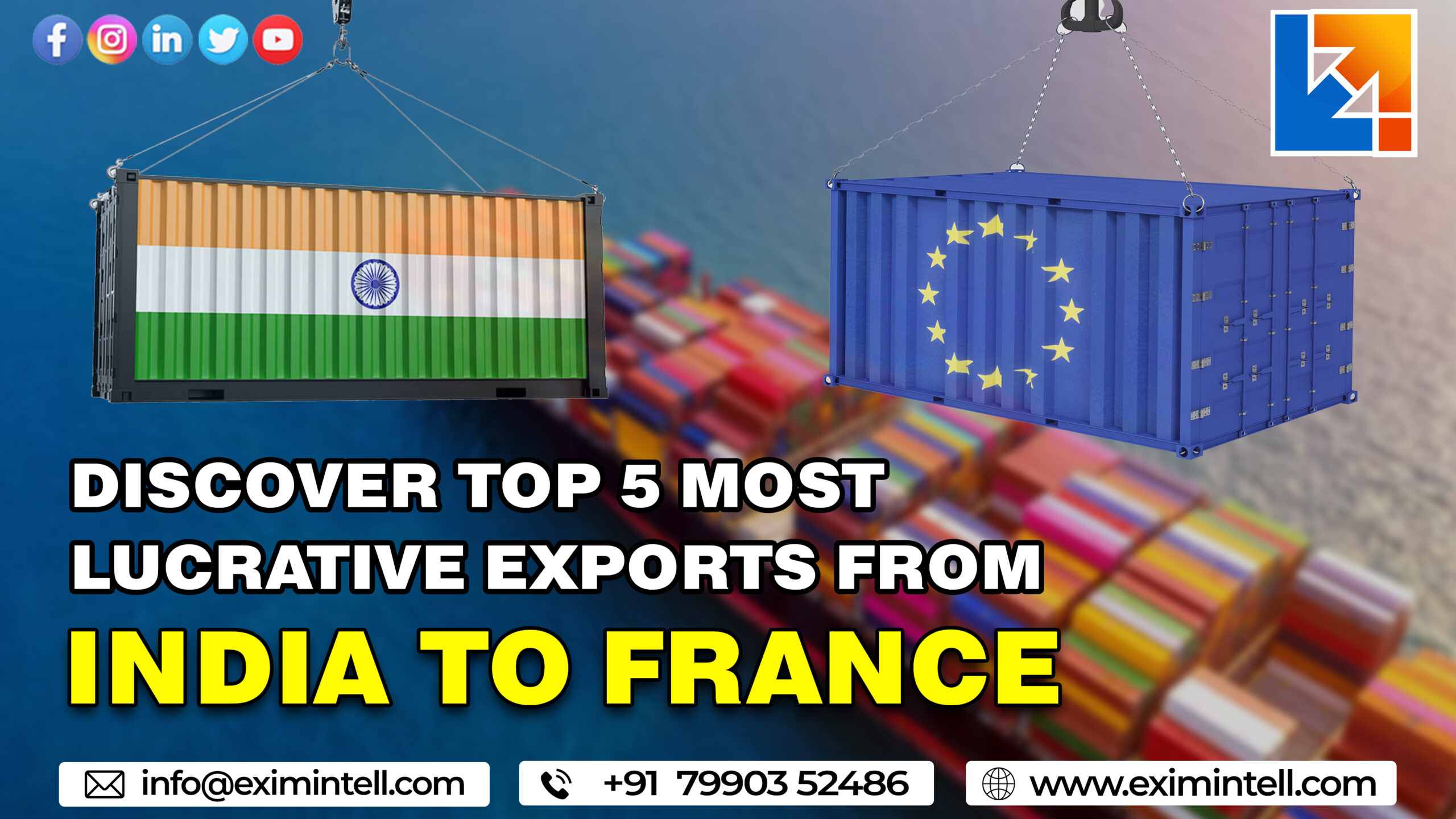Welcome to our blog, where we dive into the fascinating world of international trade and explore the symbiotic relationship between two diverse nations. In this article, we set our sights on India’s exports to Portugal in 2023—an intricate tapestry of commerce that blends ancient traditions with modern innovation.
Join us as we unveil the compelling significance behind these bustling trade routes and discover how they pave the way for a promising future filled with prosperity and cultural exchange. Get ready to embark on a mesmerizing journey through time and continents, unraveling the untold stories woven within the fabric of economic collaboration between India and Portugal!
Introduction: The Significance of India’s Exports to Portugal in 2023
In recent years, India’s exports to Portugal have increased significantly. In 2010, India’s exports to Portugal amounted to $1.6 billion, representing a significant increase from the previous year. In 2013, India’s exports to Portugal reached $2.4 billion, an increase of 46 percent from the previous year.
The following year, India’s exports to Portugal increased by 9 percent to $2.6 billion. In 2015, India’s exports to Portugal again increased by 9 percent to $2.8 billion. 2016 was a record year for India’s exports to Portugal, with a total value of $3.1 billion exported from India to Portugal. This represented an increase of 11 percent from the previous year.
The data clearly shows that there has been a consistent and steady increase in the value of Indian exports to Portugal over the past few years. This trend is expected to continue in the future as well. There are several reasons for this trend. First, the Indian economy has been growing rapidly in recent years, and this growth is expected to continue.
This economic growth has led to an increase in demand for Indian products and services abroad, including in Portugal. Secondly, the Indian government has been working hard to improve the country’s export infrastructure and promote exports through various initiatives such as Make in India and the Export-Import Bank of India (Exim Bank). These efforts are bearing fruit and helping to boost Indian exports.”
Economic Benefits of Exporting from India to Portugal
India’s exports to Portugal have been growing steadily over the past few years. In 2016, India’s exports to Portugal amounted to US$ 1.13 billion, up from US$ 956 million in 2015. This growth is significant as it represents a 17% increase in exports from India to Portugal.
The main economic benefits of exporting from India to Portugal include:
1. Increased export earnings for India: Exports from India to Portugal have increased Indian export earnings by US$ 177 million in 2016. This is a significant increase that will contribute to the overall growth of the Indian economy.

2. Trade balance improvement for India: The growth in exports from India to Portugal has helped improve India’s trade balance with Portugal. In 2016, the trade balance between the two countries was in favor of Portugal by US$ 779 million. However, this was an improvement from the 2015 trade balance which was in favor of Portugal by US$ 931 million.
3. Job creation in India: The increased exports from India to Portugal have generated new jobs in India, specifically in the export sector. This is beneficial for both the Indian economy and for employment levels within the country.
4. Wider market access for Indian products: By exporting to Portugal, Indian companies have access to a wider market for their products. This provides them with new opportunities to grow their businesses and increase their revenue.
5. Improved relations between India and Portugal: The increased economic ties between India and Portugal have improved bilateral relations between the two countries. This is beneficial for both sides, as it allows them to engage in more constructive dialogue and explore new areas of cooperation.
Trade Agreements of India’s Exports to Portugal in 2023
India and Portugal have a strong economic relationship, with bilateral trade totaling $5.51 billion in 2016. India is Portugal’s 9th largest trading partner, and Portugal is India’s 35th largest.
During Portuguese Prime Minister Antonio Costa’s visit to India in January 2017, the two countries signed four MoUs/Agreements to enhance cooperation in areas such as tourism, science and technology, start-ups, culture, and information technology.
The first Agreement was on cooperation in the field of tourism. Under this Agreement, the two countries will work together to develop institutional mechanisms for cooperation in the area of tourism promotion and marketing. They will also jointly organize workshops and seminars to promote mutual understanding and awareness of each other’s tourist destinations and products.
The second Agreement was on Information Technology and start-ups. This Cooperation Agreement seeks to establish a framework for collaboration between Indian and Portuguese entities in the area of information technology, including start-ups. The agreement will help create an enabling environment for innovation and entrepreneurship in both countries.
The third Agreement was on Scientific and Technological Cooperation. This MoU aims to establish a framework for long-term scientific and technological cooperation between India and Portugal. The agreement will help create an environment that encourages the exchange of scientific and technological personnel, information, and knowledge between the two countries.
The fourth Agreement was on Cultural Cooperation which seeks to promote greater understanding and appreciation of each other’s culture through the exchange of cultural troupes, artisans, films
Export Sectors from India that Benefit the Portuguese Economy
In 2019, Portugal was India’s 30th largest trading partner with bilateral trade totaling $5.53 billion. India’s exports to Portugal include textiles, footwear, precious stones and metals, organic chemicals, and inorganic chemicals. These products benefit the Portuguese economy by providing inputs for Portuguese industries, creating jobs, and generating tax revenue.
Textiles are one of the largest export sectors from India to Portugal. In 2019, textile exports from India to Portugal totaled $1.47 billion, making up 26% of India’s total exports to Portugal. Portugal is a leading producer of garment and textile machinery, and Indian textile exports help to meet the demand for these inputs. In addition, the textile industry is an important source of employment in Portugal, with over 80 thousand people employed in the sector.
Footwear is another major export sector from India to Portugal. In 2019, footwear exports from India to Portugal totaled $438 million, making up 8% of India’s total exports to Portugal. Portugal has a strong footwear manufacturing industry which employs over 12 thousand people. Indian exports of footwear provide inputs for this industry and help support jobs in Portugal.
Precious stones and metals are another export sector from India that benefits the Portuguese economy. In 2019, exports of these products from India to Portugal totaled $399 million, making up 7% of India’s total exports to Portugal. The Portuguese jewelry industry is a significant contributor to the country’s economy, with Jewelry accounting for 2% of total exports in 2019. Indian exports of precious stones and metals help to meet the demand for these inputs and support jobs in Portugal’s jewelry sector.
In addition to these sectors, other export sectors from India benefit the Portuguese economy, including organic chemicals ($345 million), inorganic chemicals ($229 million), pharmaceuticals ($77 million), and nuclear reactors and machinery ($68 million).
Projected Export Figures for India – Portugal Trade in 2023
India’s exports to Portugal are expected to reach $5.4 billion by 2023, up from $2.9 billion in 2018. This growth is driven by the increasing demand for Indian products and services in Portugal, as well as the expanding economic ties between the two countries.
India’s export growth to Portugal has been spurred by the country’s strong economic performance in recent years. Portugal’s GDP growth is expected to reach 2.4% in 2019, up from 1.9% in 2018, according to the International Monetary Fund (IMF). This economic expansion has led to increases in Portuguese imports, including from India.
The growing trade between India and Portugal is reflective of the expanding economic ties between the two countries. In 2016, India and Portugal signed a bilateral Investment Protection Agreement (BIPA), which provides a framework for promoting and protecting investment between the two countries. The agreement is seen as a key step in furthering economic cooperation between India and Portugal.
In addition to increased trade, cooperation between India and Portugal has also been expanding in other areas. In October 2018, the two countries launched a joint naval exercise called ‘IN-POR FORMIDABLE EXERCISE’, aimed at enhancing maritime security cooperation between them. The exercise was held off Goa, on India’s west coast, and was attended by ships from both countries’ navies.
The growing economic ties between India and Portugal are indicative of the potential for further expansion in their trade relationship.
Impact of Indian Exports on Portuguese Industries
The impact of Indian exports on Portuguese industries is significant. Portugal is a small country with a limited manufacturing base. As a result, its industries are highly dependent on imported goods and materials. India is one of Portugal’s largest trading partners and its largest supplier of imported goods.
In recent years, Indian exports to Portugal have increased significantly. This has helped to offset the decline in exports from other traditional partners such as Brazil and China. Indian exports to Portugal now account for around 10% of all Portuguese imports.
The increase in Indian exports has been driven by the growing demand for Portuguese products in India. Portuguese companies have been able to benefit from the growing Indian middle class and their desire for high-quality Western products. In particular, there has been strong demand for Portuguese wine, food, and fashion brands.
The growth in Indian exports has also been supported by government initiatives. The Indian government has been working to improve trade relations with Portugal through measures such as streamlining customs procedures and increasing investment in infrastructure. These efforts have made it easier for Indian companies to do business in Portugal and have helped to boost trade between the two countries.
Opportunities to Improve Future Exports
As the Portuguese economy continues to grow, there are opportunities for India to increase its exports to Portugal. Currently, India exports a variety of goods to Portugal, including textiles, clothing, and footwear. However, there is potential for India to export a wider range of goods, including electronics and engineering products.
To take advantage of these opportunities, Indian businesses need to be aware of the Portuguese market and the preferences of Portuguese consumers. They should also invest in marketing and promotion activities to raise awareness of their products in Portugal. Additionally, it is important to develop strong relationships with Portuguese importers and distributors.
By taking advantage of these opportunities, India can significantly increase its exports to Portugal and contribute to the continued growth of the Portuguese economy.
Conclusion
In conclusion, the significance of India’s exports to Portugal in 2023 is amplified by the pivotal role played by Exim Intell as an Export Import Business Consultant. Together, they form a powerful synergy that drives economic growth, strengthens bilateral ties, and paves the way for a prosperous future between India and Portugal. As the world becomes increasingly interconnected, the value of such collaborative efforts cannot be overstated, making Exim Intell an essential catalyst for success in the global trade landscape.




















